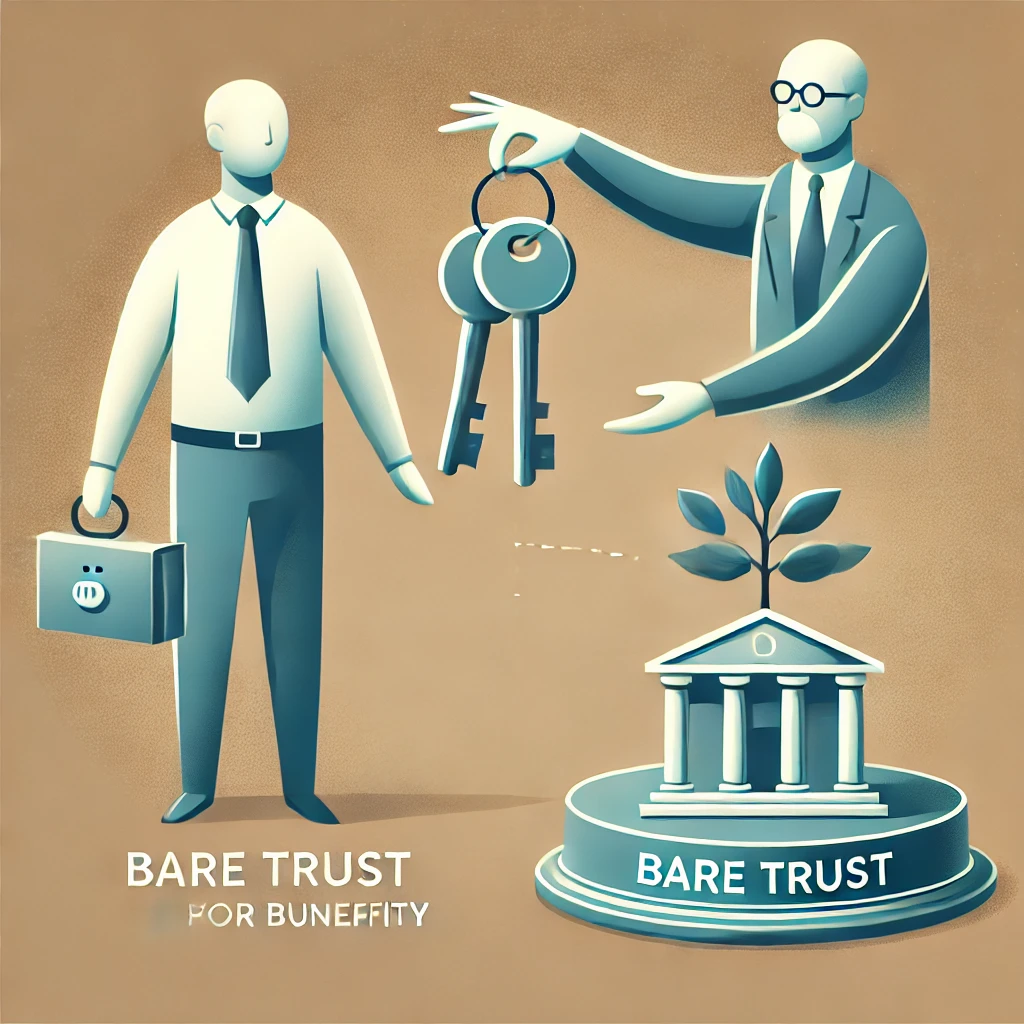A bare trust, also known as a simple trust, is a type of trust where the trustee holds the trust property on behalf of the beneficiary, but the trustee has no active duties beyond transferring the trust property to the beneficiary when requested. The trustee holds the legal title to the assets, while the beneficiary has an absolute right to the capital and income of the trust. Essentially, the trustee’s role is administrative, meaning they have no discretion over how the trust’s assets are used.
Key Features of a Bare Trust:
- Beneficiary’s Control: The beneficiary has the right to direct the trustee on what to do with the assets, including transferring ownership or income.
- Simple Structure: Bare trusts are straightforward because the trustee has no discretion or additional responsibilities beyond holding and transferring the assets.
- Taxation: The beneficiary of a bare trust is responsible for paying taxes on the trust’s income or capital gains, as the income and assets are treated as belonging to the beneficiary.
- Flexibility: The beneficiary can be of any age (though they must be legally capable of managing the assets if they are to control them).
Common Uses of Bare Trusts:
- Inheritance: Assets can be held in trust until a beneficiary reaches a certain age, after which they can take full control.
- Property Ownership: Often used in real estate transactions where legal ownership is transferred, but beneficial ownership remains with another party.
- Tax Planning: Bare trusts are sometimes used for estate or tax planning, particularly to simplify the transfer of assets.
Bare trusts are commonly used because they provide simplicity and clarity in holding and transferring assets while maintaining legal flexibility for beneficiaries.






